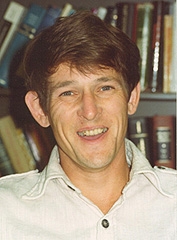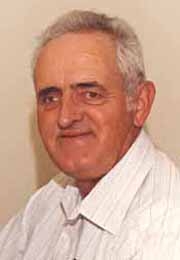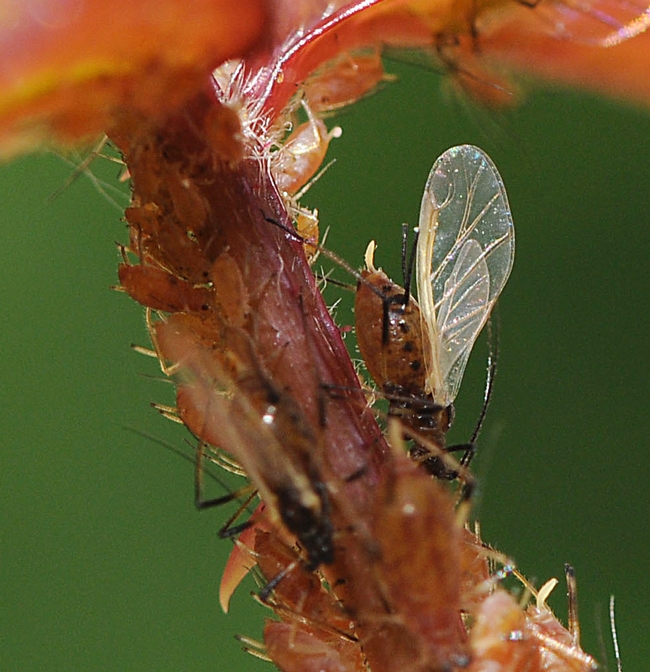
It happened 14 years ago tomorrow. Chemical ecologist Sean Duffey (right), then professor and vice chair of the UC Davis Department of Entomology--and known for taking teaching, research, public service and administrative duties to exciting new levels--died May 21, 1997 of lung cancer. He was 53.
He left a legacy treasured by the faculty, students and staff, not to mention his family, friends and colleagues. Every day many pass by the “Au Revoir Sean Duffey” wall memorial on the third floor of Briggs Hall. The work of Davis sculptor Donna Billick (a self-described "20th century cave artist") and Davis calligraphy artist Marilyn Judson, it contains recollections of his life. It includes images of everything from the insects he studied, to the hat he wore, to a soccer ball he kicked.
And every May, the faithful place flowers there in his memory.

Felton will deliver the Thomas and Nina Leigh Distinguished Alumni Seminar on “Dialogues at the Plant-Herbivore Interface” at 6 p.m. in Ballroom B of the new UC Davis Conference Center, located across from the Mondavi Center.
The lecture is open to the public and will be preceded by a reception at 5 p.m. A buffet dinner for invited guests will follow Felton’s talk.
Felton, professor and head of the Penn State Department of Entomology since 2000, received his doctorate in entomology from UC Davis in 1988. He did postdoctoral work at UC Davis from 1988 to 2000, and then joined the University of Arkansas, Fayetteville, advancing to professor in 1998.
About his talk, Felton says: “Our understanding of induced resistance against herbivores has grown immeasurably during the last several decades. Based upon the emerging literature, I argue that induced resistance represents a continuum of phenotypes that is determined by the plant’s ability to integrate multiple suites of signals of plant and herbivore origin.”
“Herbivore-derived cues may be perceived by plants to elicit defensive responses, but herbivores may also partially evade plant defenses through a variety of secreted effectors. A more comprehensive model describing induced resistance is needed that illustrates the range of signals arising from early detection through herbivore feeding, and finally, through subsequent plant generations.”

Leigh joined the UC Davis Department of Entomology in 1958, retiring in 1991 as an emeritus professor. However, like many entomologists, he continued to remain active in his research and collaboration until his death on Oct. 26, 1993.
Thomas Leigh, Sean Duffey and Gary Felton…three familiar faces in the world of entomology and all dedicated to learning, teaching and giving back. As poet laureate Maya Angelou so eloquently wrote: ”When you learn, teach. When you get, give.”
They’ve done just that.
Attached Images:

Gary Felton will speak on plant-herbivore interactions at the Thomas and Nina Leigh Distinguished Alumni Seminar. These are aphids on a rose. (Photo by Kathy Keatley Garvey)